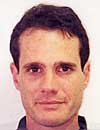USTA Player Development
Takes Too Much Heat
Matt Cronin

During the presidential primary season, it is common for candidates and interested observers to take big rips at government, because it is a large, easy target. The same goes with the USTA, the nation's governing tennis body.
My question is this: who is to blame for the so-called lack of American champions? Is it the USTA or is it at least partially the private coaches so critical of USTA Player Development?
Recently, prominent coach Wayne Bryan, the father of doubles No. 1's Bob and Mike, wrote a very long, widely-circulated letter, and then a follow-up letter, taking on dozens of issues in U.S. tennis. These included issues regarding 10 and under tennis and foreign players in college.
But what created the most stir was his direct and prolonged criticism of the USTA and his call for the elimination of the Player Development program.
"Having observed it up close and personal for the past 23 years, I say USTA Player Development has been and continues to be the biggest impediment to the growth of tennis in this country and also the creation of champions," Bryan wrote.
"Get rid of USTA Player Development altogether," Bryan goes on to say. "A national approach to coaching is bound to be a failure." (To read Wayne’s entire email, Click Here.)

Shortly thereafter former USTA national coach and elite pro player Tim Mayotte also issued a statement criticizing the Player Development leadership, saying, "I strongly agree with Wayne’s outrage over the misuse of funds and the arrogance of that organization." (Click Here to read Tim’s statement in its entirety.)
In response, Player Development head Patrick McEnroe issued a formal reply which, although expressing his admiration for Wayne Bryan, went on to outline his disagreement with virtually every point in his email.
Regarding player development McEnroe wrote: "The USTA has, for years, played a vital role in the development of many top professionals, but the idea that any one person is responsible for the development of any individual player is ludicrous."
"We’re in the business of helping the best young players get better by providing a controlled environment in which they will have the best chance of developing," he went on to add. (To read Patrick’s entire statement, Click Here.)
In my opinion some good points were made all around, but in this one column, I am only going to touch on a core issue that affects many others: is the USTA helping or hindering the growth and success of Amercian tennis?

Before I do, some necessary disclosure. I've been contributing to USTA.com for many years and am also hired by the USTA to do radio broadcasts at the U.S.
I know, respect and like Patrick McEnroe quite a bit. But I also think that Bob and Mike Bryan are two of the most thoughtful, interesting and cooperative players I've met in covering tennis for the past 20 years. Clearly, Wayne and his wife, Kathy (a former touring pro herself) did a fine job in raising their twins, on court and off.
That said I think the focus on the alleged failures of the USTA to produce another generation of American champions is only half the story, one that obscures the real role of USTA.
Like the government, which does a lot of dirty work that the private sector either does not want to do or cannot manage, such as building infrastructure, the USTA provides invaluable service to the nation's tennis scene. It has established a comprehensive tournament system that everyone benefits from (even if it is not perfect).
It helps resurface damaged pubic courts. It provides grants to underprivileged children. And yes, it helps to produce pro players. It is a fallacy to say otherwise.

Every American player in recent memory, save the Williams sisters, have benefited for the USTA tournament system as juniors, and even Venus and Serena, who ignored the junior tournament circuit, have received USTA coaching from former Fed Cup captain Billie Jean King, whom they both adore and have publicly praised.
Andy Roddick and one of his private coaches received USTA aid. John Isner and Sam Querrey have as well.
But what about the finger pointing at the USTA for not producing players that are winning Grand Slams? Let me answer that with another question. Besides the relatively small Player Development program there are thousands of private coaches in the U.S. What is their role, if any, in the failure to develop new American champions?

Looking back, the two previous generations of American champions were all privately developed. Jimmy Connors, John McEnroe, Andre Agassi, Pete Sampras, Lindsay Davenport, and Jennifer Capriati, for example, all were on their way to the top of the game before Player Development existed, and/or had little or no direct USTA support.
These players were all developed by famous private coaches or academies. These same coaches are often the ones leading the critique of the USTA, but many have trotted out a series of new players at international junior events and seen them have their heads handed to them.
If you look at the ATP and WTA rankings over the past decade, you can identify almost 100 American players who were primarily privately coached, said to have had great potential, and went nowhere.
Is that the USTA's fault? Or does some of the fault lie with private coaches themselves? Or are there other factors in play that fall outside the range of coaching, issues that are often ignored or obscured in the ongoing finger pointing?
Should there be shared, real responsibility taken, or should Player Development be thrown under the bus as the obvious and most convenient scapegoat?
While Bryan is right to say that in the past some private coaches have had their toes stepped on by the USTA, his overall critique does not match reality. There are plenty of young pros who are the children of working to middle class parents who would have had zero chance to make it as pros if not for USTA financial assistance and coaching.

Take 15-year-old Australian Open junior champion Taylor Townsend, who lives at USTA Player Development headquarters in Florida and has stated that she simply does not have the resources to pay a top private coach and is thankful every day for what the USTA has done for her--providing her with housing, food, coaching, travel expenses and a structure to her career path.
Three other teenage girls with sizeable potential --Christina McHale, Sloane Stephens and Madison Keys --have also had significant USTA help. McHale, who is now the second highest ranking American female, received a huge boost by traveling with USTA coaches and working out at the USTA's facility in Flushing Meadows, the site of the US Open.
Even a problematic case like Donald Young, has received thousands of dollars of US aid and despite seeming to flourish under USTA coaching, has gone back to his private coach parents time and time again.
Should the USTA offer promising players the option of having the private coaches funded? Sure, and it does so. But should there be no oversight? That would be insane for any responsible organization.
Has the USTA, like the federal government, been prone to "micro-managing" in the past, as Bryan claims? Probably, but that is not an organizational trait, that a trait of an individual person. Organizations do not act independently of the people that run them.

The great private coach Paul Annacone was the head counsel for Pete Sampras and now plays the same role for Roger Federer. Annacone once ran Player Development for the USTA and later, for Britain's LTA. Was he a lousy coach when he was working on the public side who worked his magic only in the private sector? I doubt it.
I've talked to every single U.S. pro of note since 1992 and many others who most folks have never heard of, and I do not hear the carping about USTA Player Development that Bryan claims is so universal.
What has always worked best economically and politically in other arenas in the United States is getting the input of as many people as possible, developing some kind of consensus, then putting together a sound plan and moving forward.
Every coach and person in the U.S. tennis industry wants to see American tennis flourish and if everyone puts their head together, the country can continue to be a force in the pro game.
But divisive arguments are only going to lead to more struggles. My personal hope is that the next time the top minds in the game publicly engage, it will be to cooperate in devising an improved plan for the rest of the 21st century.






